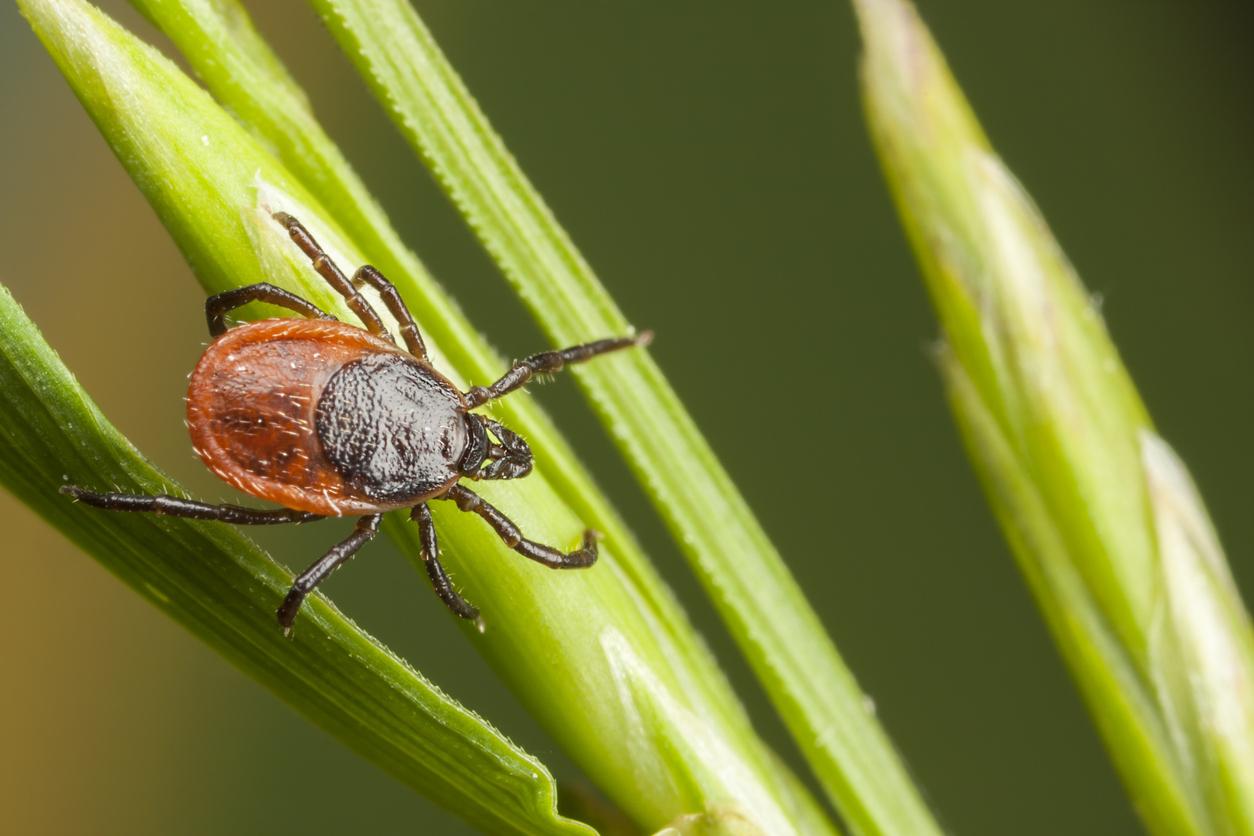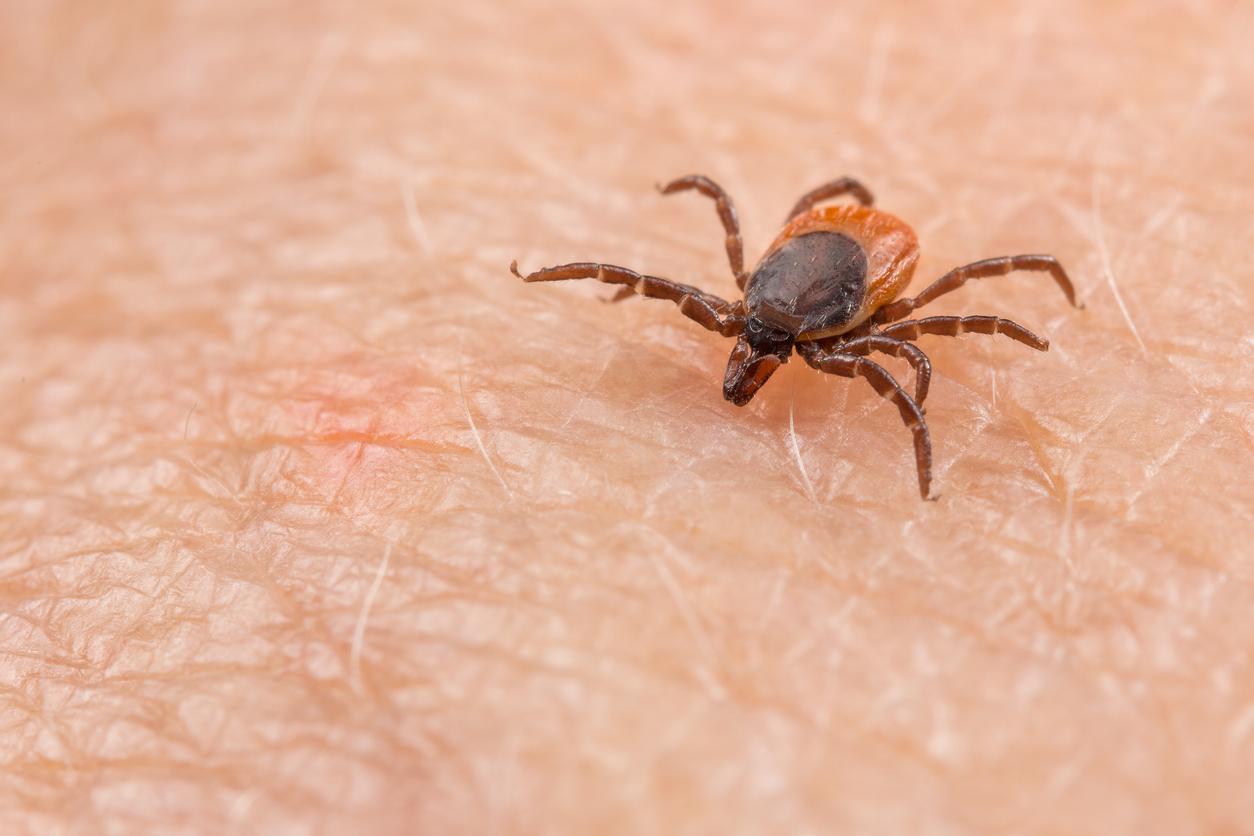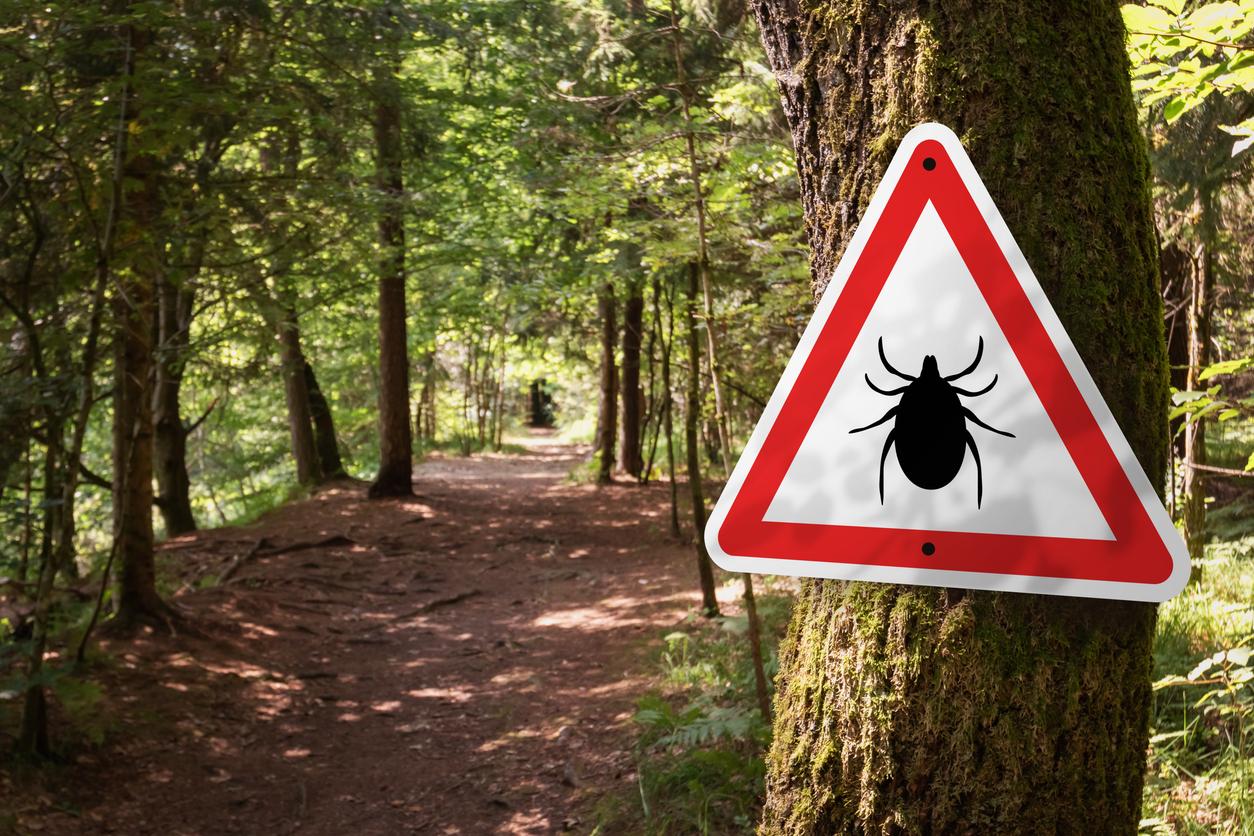In the forests, ticks, vectors of Lyme disease, are more and more numerous. Here are the recommendations for removing them.

- In 2020, 60,033 cases of Lyme disease were recorded.
- After the bite, a small red plaque, often responsible for itching, may appear.
Tall grass, brush, carpets of dead leaves… Ticks live in meadows, parks or even wooded and humid areas. For more than fifty years, these parasitic mites have proliferated in forests in Europe. This increase in their populations would be caused by the modification of landscapes in France, climate change or socio-economic transformations, according to a scientific article published on The Conversation. Problem: these pests feed on the blood of their hosts and are vectors of pathogens responsible for infectious pathologies, such as Lyme disease. To reduce the risk of infection, it should be extracted correctly and as soon as possible.
The use of a tick remover, the most effective method
If a tick is planted in the skin, it is advisable not to apply any product (ether, alcohol, etc.) to the area concerned, as this could cause the ticks to regurgitate and release several bacteria present in their saliva. To quickly remove this insect, the safest method is to use a tick remover, sold in pharmacies. According to’Health Insuranceyou should delicately grasp the parasite as close as possible to the skin and pull it gently but firmly, making a circular movement so as not to tear off its head.
Tweezers are “not recommended”
If the patient does not have a tick puller, he can use tweezers. To remove it effectively, he must grasp the tick at the base by pulling upwards, but without making a rotating movement. Asked by TF1infothe Union of Unions of Community Pharmacists (USPO) reported that this technique was “hard” and “not recommended”.
Once the tick has been removed, it is recommended to disinfect the skin with an antiseptic based on chlorhexidine, hexamidine or povidone iodine or modified alcohol. For a month, it is recommended to monitor the bitten skin area. “If you see an inflammatory red plaque appearing that extends, between 3 to 30 days after the bite, you must consult a doctor because it is erythema migrans, a symptom of Lyme disease”, can we read on the website of the Health Insurance.

















